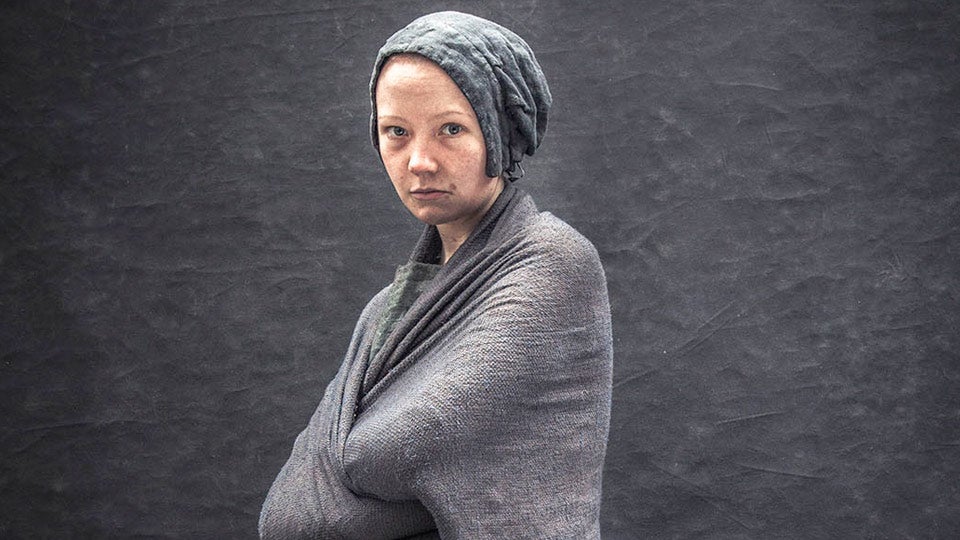TV review: The Mill is at the gritty end of the spectrum... but it's not as bleak as The Village
The Mill, Sun, Channel 4 // The Mystery of Rome's X Tombs, Sun, BBC2

Your support helps us to tell the story
From reproductive rights to climate change to Big Tech, The Independent is on the ground when the story is developing. Whether it's investigating the financials of Elon Musk's pro-Trump PAC or producing our latest documentary, 'The A Word', which shines a light on the American women fighting for reproductive rights, we know how important it is to parse out the facts from the messaging.
At such a critical moment in US history, we need reporters on the ground. Your donation allows us to keep sending journalists to speak to both sides of the story.
The Independent is trusted by Americans across the entire political spectrum. And unlike many other quality news outlets, we choose not to lock Americans out of our reporting and analysis with paywalls. We believe quality journalism should be available to everyone, paid for by those who can afford it.
Your support makes all the difference.Maybe Oliver Twist should have counted his blessings when he held out his bowl of gruel and asked for more. At least he had a bowl to proffer! The overworked factory children in The Mill, who have been narrowly saved from the workhouse only to find themselves around heavy machinery, working every hour that God sends them, had to eat their sludge-like dinners off their own palms as a corpulent cook ladelled it straight into their cupped hands. This was 1833, five years before Dickens dramatised the harsh social realities for London's child orphans, and it was up North, amid the rural industries, when children were expected to work 12-hour shifts for no money at all, in a form of “white slave labour” that bore parallels with the Caribbean slave trade.
The mill-owning Gregs are the wealthy family on which this four-part period drama is based. Its characters have been, in part, factually inspired by the historical archive of Quarry Bank Mill in Cheshire, and the real Gregs were a leading industrial family who helped to found The Manchester Guardian and Britain's first stock exchange; but they also bought the children that the workhouse sold and they owned a slave plantation in Dominica. The Gregs were not the focus of this first episode, but the below-stairs crew, particularly little Tommy, whose hand had to be amputated after it was chewed up by factory machinery. A major plotline pivoted around a predatory “overlooker” at the mill who liked to pounce on the girls while they were in the privy and have his way with them.
In its child's-eye view, it resembled the BBC drama The Village, though that began its first series at the onset of the First World War, and showed how children's lives were changed – and sometimes devastated – by the events around them. There were similar preoccupations here: the effort to capture the hardships of ordinary working folk, with a particularly humane focus on the children caught up in the larger turbulence of the Industrial Revolution. There was also, occasionally, that melancholy screech of a lone violin that The Village also inflicted on us in its most anguished moments.
The backdrop was one of political unrest, with protests urging the government to regularise a child's working day to a mere 10 hours. Just as the outside world was embroiled in this unrest, so mutiny was fomenting among the children, led by one particularly feisty mill girl (Kerrie Hayes) based on the real-life Esther Price, and who looked as if she would forge an interesting friendship (or more?) with the maverick mechanic (Matthew McNulty), who throws a good punch and has been hired straight out of prison for his expertise. As period dramas go, this was at the gritty end of the spectrum though possibly not as bleak as The Village, partly due to the rebellious energy of Esther Price. It also had just enough intrigue and promise for plot and character development to get a return audience interested.
The Mystery of Rome's X Tombs, meanwhile, was a quietly breathtaking exercise in archaeological detection. Beneath modern Rome, we were told by the fresh-faced classical historian Dr Michael Scott, are the catacombs that hold the ancient dead and where, in 2003, a bricked-up tomb holding thousands of bodies was discovered. Even for the non-anorak, the mystery of an ancient mass grave filled with 2,500 bodies holds a certain morbid curiosity. In the end, it turned out not to be the work of a murderous emperor – what a surprise! – but a virulent plague brought in by the army that killed five million Romans in all. Most remarkable, alongside the real-life Indiana Joneses doing their day's work, was the state-of-the-art digital technolgy that could put ancient flesh back on bone.
Join our commenting forum
Join thought-provoking conversations, follow other Independent readers and see their replies
Comments